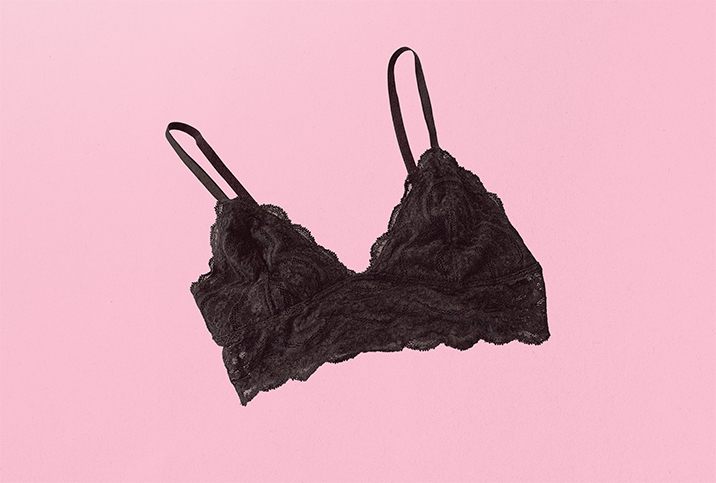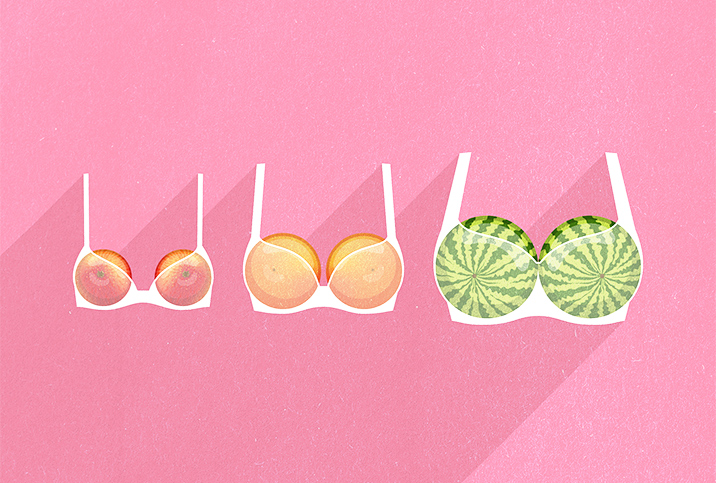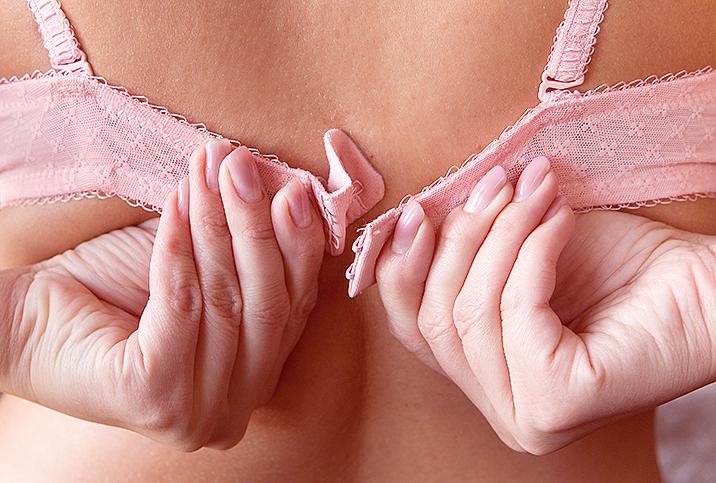The Rise of the Comfortable Bra, and Why Your Boobs Might Thank You

A quick Google search will show you numerous articles titled "The Death of the Bra," reporting that young women are ditching the bra and the lingerie liberation is here. Although the title is catchy, reports of the death of the brassiere have been exaggerated. While not quite dying, the bra market is changing.
It's easy to blame the pandemic for the downfall of Victoria's Secret, which closed 250 stores in 2020 and planned to close between 30 and 50 at the beginning of 2021. But the undergarment's troubles started long before the quarantine allowed women to work braless from home.
Research shows that millennial women, prioritizing health and comfort, are most likely driving the trend. But they aren't ditching bras, they're just leaving the conventional ones for their mothers—who like them fine, thank you very much. In short, the century-old undergarment is staying alive by becoming more…flexible.
She's so over being under the wire
Market data shows bra sales withstood COVID-19 relatively well, only dropping 16 percent overall. But while traditional underwire bras underperformed, demand for bralettes has grown, along with sports bra sales, which increased by 32 percent in that same time period. The top-selling bra in 2021 was a wire-free, comfort-first option.
While it's no wonder the wire-free bra has increased in popularity over the pandemic, it's actually been growing in popularity for years. The number of customers shopping for sports bras has been steadily increasing since 2015.
By choosing a more natural style, millennial women are saying no to gouging buckles, too-tight straps and maybe even the male-pleasing market that created them. Glamour has its place, but this generation wants to decide if and when to use it.
"Their mindset is, 'We're not playing by the old media standards or gender standards of the woman needs to look sexy for a man, and needs to push up her boobs and make a pouty face,'" said Jane Buckingham, CEO of marketing consultant firm Trendera, which forecasts trends, based on generational preferences, through surveys, focus groups and in-person interviews.
Younger women, most often the target demographic for "sexy" bras—focused on looks over comfort—are no longer as interested in wearing uncomfortable undergarments. And the search for a comfortable bra isn't just for the youth. These days, women ages 45 to 65 are making stage-of-life choices based on their need to address breast ptosis (sagging), spine curvature, posture—and, you guessed it, comfort.
'We're not playing by the old media standards or gender standards of the woman needs to look sexy for a man, and needs to push up her boobs and make a pouty face.'
A 2014 study asked women ages 45 to 65 about their bra preferences and found that 99 percent of them rated comfort as important. The study revealed that "the bra variables of primary importance to participants were: comfort, the bra's ability to stay in place, optimal fit, appearance under clothing, support, discreetness, shoulder strap design, silhouette, breast shape, fabric and breast lift."
While comfort is key for all demographics it seems, the traditional bra isn't quite out of style.
Judy P. Masucci, a scientist turned bra expert and the owner of the Levana Bratique in Wexford, Pennsylvania, carries styles for women of all shapes and sizes who are reluctant to give up the traditional bra.
"Obviously, I think wearing a good bra is important, because it helps your posture, it helps you to feel better, it helps you to stand up taller," Masucci said. "It definitely helps with self-confidence, with morale, with how you look and feel about yourself."
Women with larger breasts may also appreciate the support of a wired bra. Elizabeth Madden, 42, an antique dealer in Cleveland, said a bralette isn't enough for her. "I got some regular bras with the underwire, they work the best for me," she said. "I have a bra without an underwire, but it's not as supportive. I wear a D and I don't think (the bralette) looks good."
Madden also didn't like the psychological effects of wearing a nontraditional bra. "When I was wearing a sports bra all the time, I just felt like I was never dressed. I didn't really like it. I really don't want to be comfortable all day long—it makes me feel less productive," Madden said.
The importance of finding the right bra
While most of us were raised on the belief that bras prevent sagging, numerous studies have found that breast ptosis occurs because of genetics, aging and weight fluctuations. A small French study even found evidence that bras cause sagging.
Whatever the case is, if you do choose to wear a traditional bra, there are some things to keep in mind to ensure optimal breast health:
- Ensure your bra fits. Like, really fits. If you're unsure, schedule a bra fitting at a reliable bra store. A too-tight wired bra can be painful and create skin irritation if it's digging into your underboob.
- Get the right bra for your activity. Those with larger breasts wearing misfitting bras can experience a lot of motion when running or engaging in other physical activities, which can cause serious breast and back pain.
- Keep your bras clean. Sweat and friction caused by an underwire can lead to fungus, blisters, rashes and general irritation. On sweaty days, be sure to throw that bra in the laundry hamper and take care of the skin around your breasts.
In general, the traditional underwire bra can cause problems if not worn correctly. Skin irritation leading to bacterial growth can be an issue, as can general discomfort with constricting materials. Even if you're not ready to ditch the traditional bra, your boobs may thank you for an occasional dalliance into the world of sports bras (or no bras).
The bra industry is changing and likely will continue to change as generational shifts in shopping habits occur and work-from-home comfort dominates the space. In the end, to wear a bra or not to wear a bra—to wear sports bras or high-class lingerie every day—it's up to you.


















